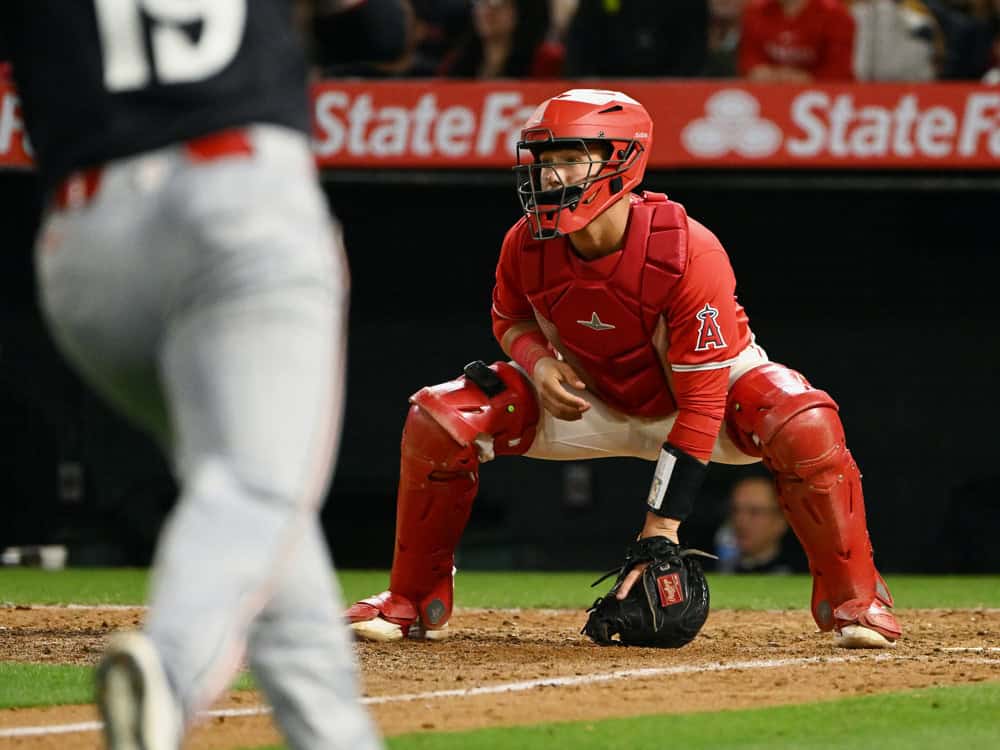As promising as the White Sox's long-term catching outlook appears with Kyle Teel and Edgar Quero on the doorstep of the majors, neither had accrued enough Triple-A experience to feel confident in handing them an Opening Day roster assignment.
The club solved that problem by trading for another catcher who was a first-round pick out of the University of Virginia. This time, they acquired Matt Thaiss from the Cubs for cash considerations, and he and Korey Lee figure to have the inside track for being the two catchers the White Sox will carry out of spring training.
The 29-year-old Thaiss is on his third team of the offseason, as he's been the victim of a different kind of squeezing this winter. The Angels designated him for assignment last month after signing Travis d'Arnaud, then flipped him to the Cubs for cash on Nov. 20. He sat on the Cubs' depth chart as the backup catcher for a few weeks, even agreeing to a $1 million salary to avoid arbitration -- $400,000 if sent to the minors -- but then the Cubs acquired Carson Kelly during the winter meetings to pair with Miguel Amaya behind the plate, and Thaiss was once again pushed out of the picture.
The Angels selected Thaiss 16th overall in the 2016 draft, six picks after the White Sox picked Zack Collins, and their teams couldn't have chosen more divergent courses. While the White Sox committed to Collins as a catcher, matriculating him through the system despite shortcomings on both sides of the ball, the Angels immediately moved Thaiss from behind the plate. He bounced between first and third base on his way up the chain, only returning to catching in 2021 -- five seasons after he last wore that mitt -- when it became clear that his bat wouldn't lead the way.
White Sox catching coach Drew Butera was on hand for Thaiss' transition with the Angels, first as a Triple-A teammate in 2021 and then as a coach two years later, when Thaiss found himself getting regular work due to his lack of options and Max Stassi's hip injury. Butera offered encouraging words about Thaiss' development to the Orange County Register in 2023:
“He’s put himself in a really good position to receive and frame balls,” Angels catching coach Drew Butera said. “I think his throwing has improved tremendously. And I think it kind of goes with every catcher, but his game calling, the more you do it, the better you get at it.”
And his manager at the time, Phil Nevin, could empathize with Thaiss as a former first-round pick who had to battle his way back into the game:
“It’s fun to see that growth at this level, when somebody finally gets those opportunities,” Nevin said. “They’re hard to come by when you first come up in the big leagues. Not everybody just gets handed a position. He certainly had to work through it.”
As the Angels' second-string catcher the last two years, Thaiss hit .210/.320/.325 over 152 games and 493 plate appearances. That he kept his head above a .670 OPS against right-handed pitching each of the last two years lends a certain logic, if not electricity, to pairing him with a right-handed Lee in the name of improving upon last season’s offensive putridity.
If Thaiss’ defense is what it is and it's a minor miracle that he was able to resume catching in the first place, Statcast and Baseball Prospectus say he provides below-average framing but above-average blocking, and at least he's a more rosterable option than Chuckie Robinson. If Butera and Walker McKinven have ideas for how to get more out of Thaiss' game, then Lee could be the expendable catcher whenever the White Sox come calling for Teel or Quero. If it comes a time for the White Sox to call upon Teel and Quero, Thaiss' experience at the infield corners could keep him in the picture, but everybody involved will cross that bridge when they get to it.





